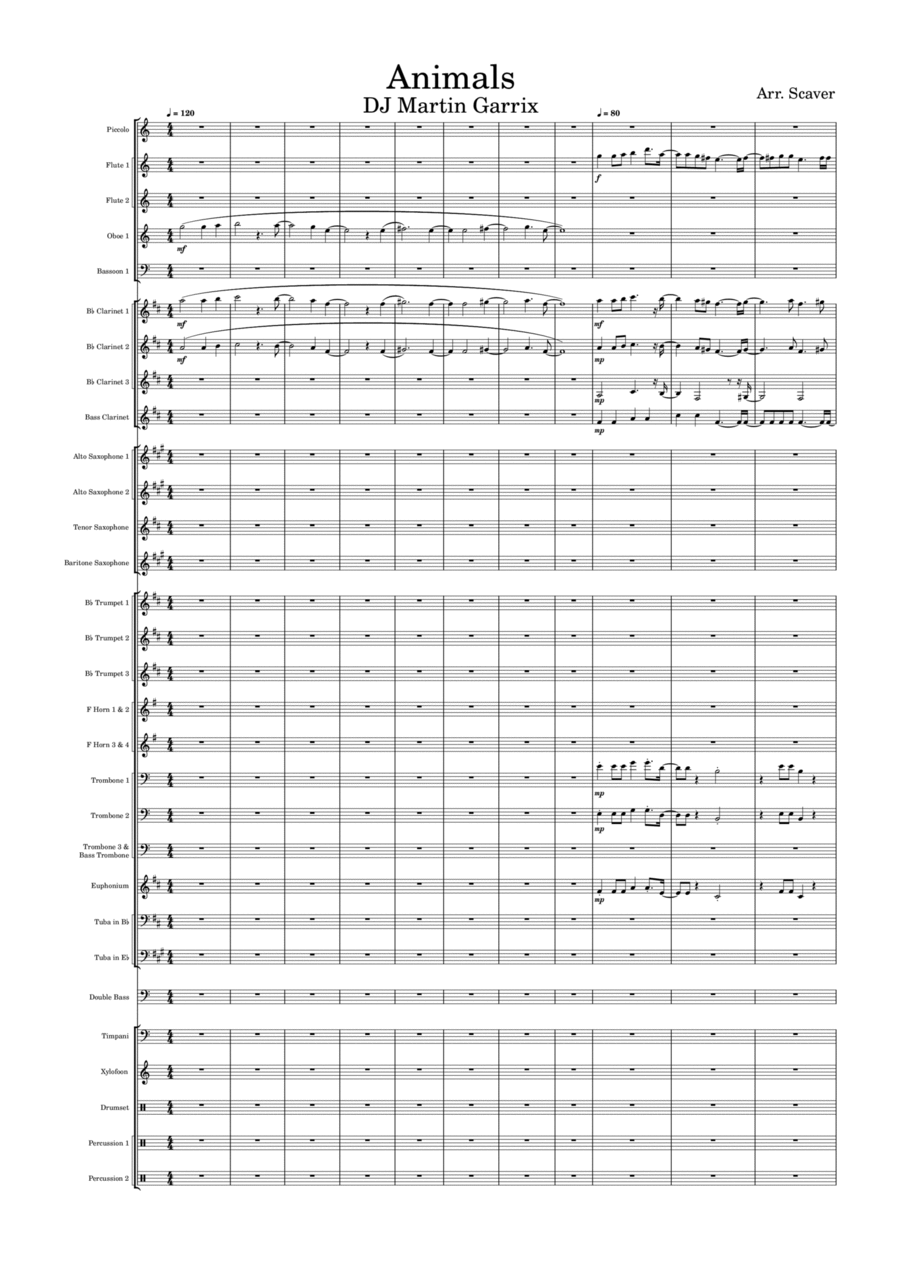Concert Band - Level 2 - Digital Download SKU: A0.1235675 By Martin Garrix. By Martijn Garritsen. Arranged by Scaver. 21st Century,Disco,Pop,Video Game. Score and Parts. 41 pages. Scaver #831187. Published by Scaver (A0.1235675). Scaver Music, a renowned concert band arranger, has recently unveiled their latest project: a concert band version of the hit song Animals by Martin Garrix. Originally released as a digital download on iTunes on June 17, 2013, Animals quickly gained popularity within the electronic dance music (EDM) culture, propelling Martin Garrix to become the youngest producer to ever have a song reach number one on Beatport, a prominent electronic music store.The track's infectious beats and energetic melodies captivated listeners, leading it to achieve remarkable success on various music charts. It climbed into the top ten and secured the number one spot on numerous electronic music charts, as well as some mainstream ones. Notably, Animals topped the singles charts in the United Kingdom, French-speaking Switzerland, and Belgium. In the United States, it reached number 21 on the Billboard Hot 100 and claimed the number one position on the Dance chart.Before its official release, Animals generated significant buzz as it was played anonymously, causing speculation to grow about the artist behind the track. Dutch record label Spinnin' Records fueled the anticipation by sharing a teaser clip of the song online, titled Animals (Teaser). This led to increased speculation, with a Vine video featuring Agnes from the animated film Despicable Me further stoking curiosity. The track was mistakenly attributed to other artists such as Hardwell, GTA, Sidney Samson, and Bassjackers before Martin Garrix's true identity as the producer was revealed.Martin Garrix shared insights into the composition of Animals, explaining that the melody was based on a previous track he had composed two years prior but never released. The drop, characterized by its ruthlessly minimalist and rhythmic sound, is inspired by Busta Rhymes' What It Is. Additionally, the opening section of the song draws inspiration from a track called D.A.T.A. by Aura Qualic. While Animals is predominantly instrumental, it features a spoken verse by a friend of Martin Garrix with the lyrics We're the fucking animals, delivered in a low pitch and repeated twice throughout the song.Now, Scaver Music has taken up the exciting challenge of arranging Animals for a concert band, bringing a fresh interpretation of this electronic dance anthem to a new musical realm. With their expertise in creating captivating arrangements, Scaver Music aims to capture the essence of the original track while adding the rich harmonies, dynamic textures, and powerful brass and woodwind sections that define the concert band sound.Fans of Animals and concert band enthusiasts alike can look forward to experiencing this new rendition, which promises to be a thrilling and unforgettable musical journey. Scaver Music's concert band version of Animals will undoubtedly provide a unique and exhilarating performance, blending the infectious energy of electronic dance music with the grandeur and depth of a full concert band. Instrument list: PiccoloFlute 1,2OboeBassoonClarinet Bb 1,2,3Bass ClarinetAlto Saxophone 1,2Tenor SaxophoneBaritone SaxophoneTrumpet Bb 1,2,3Horn F 1-2,3-4Trombone 1,2,3Euphonium BbTuba BbTuba EbDouble BassTimpaniXylophoneDrumsetPercussion 1,2
